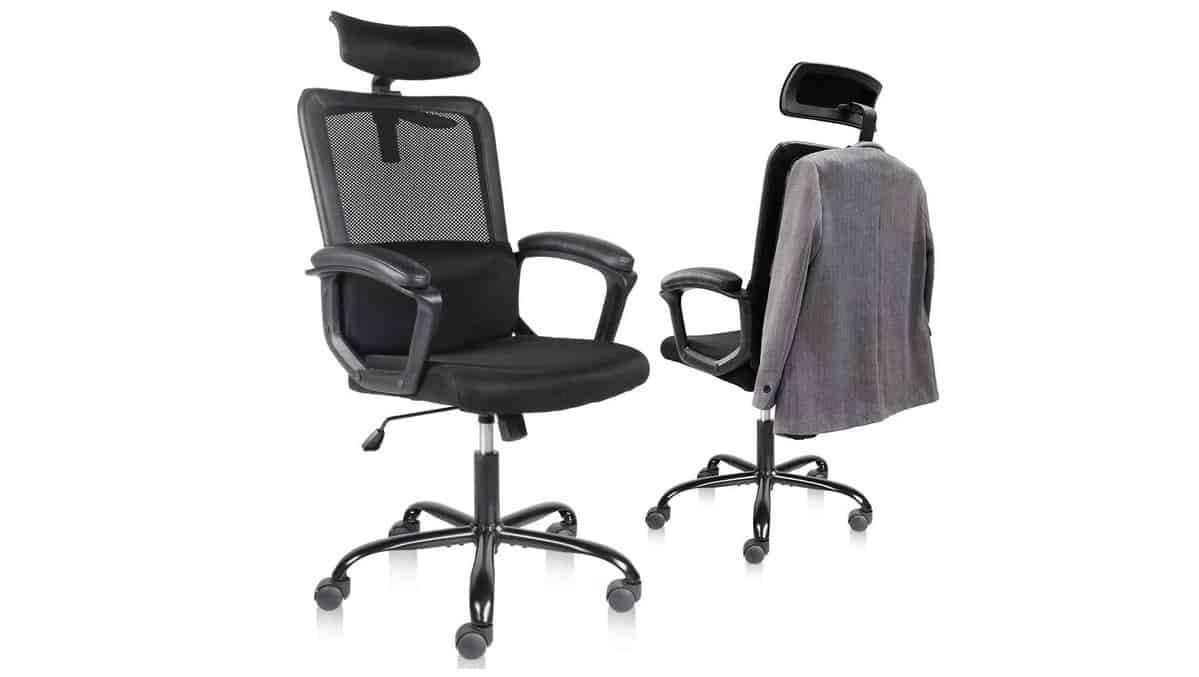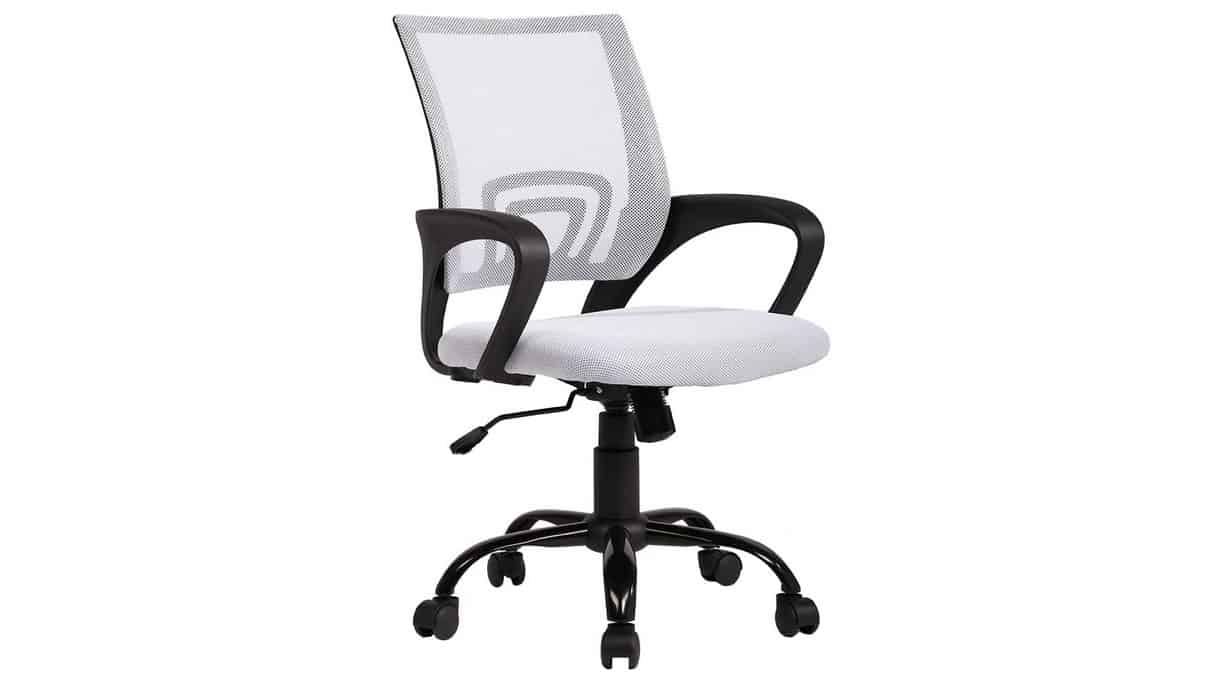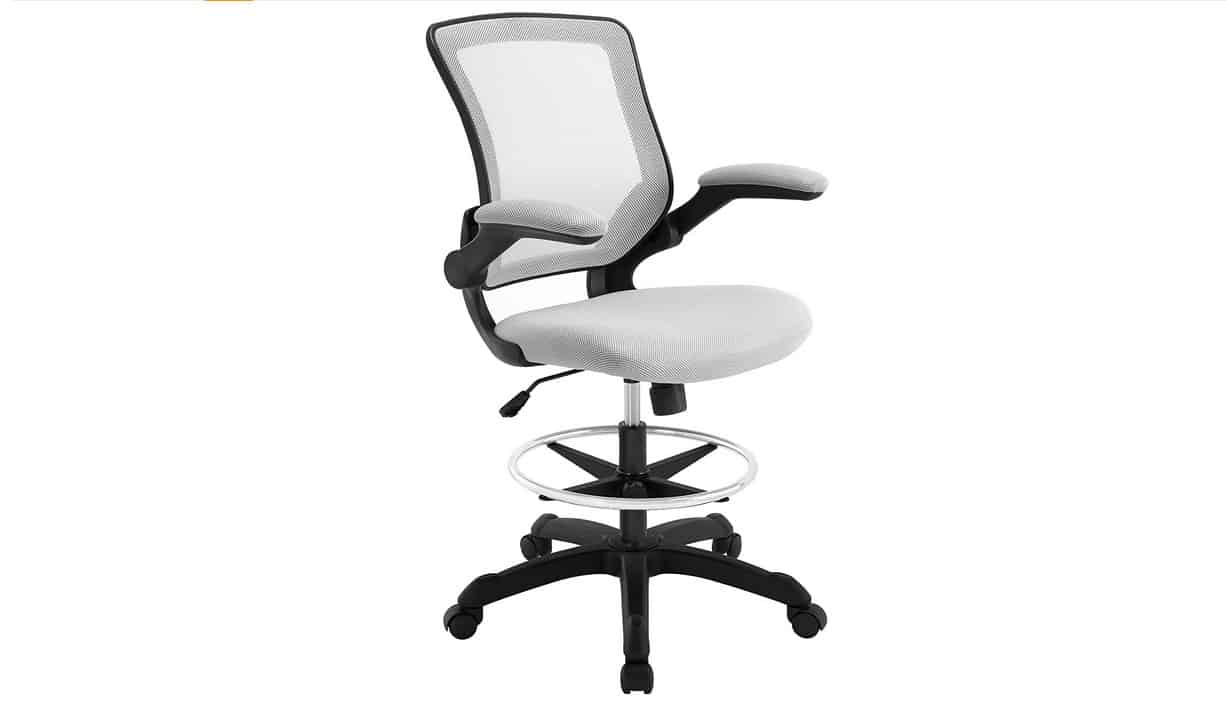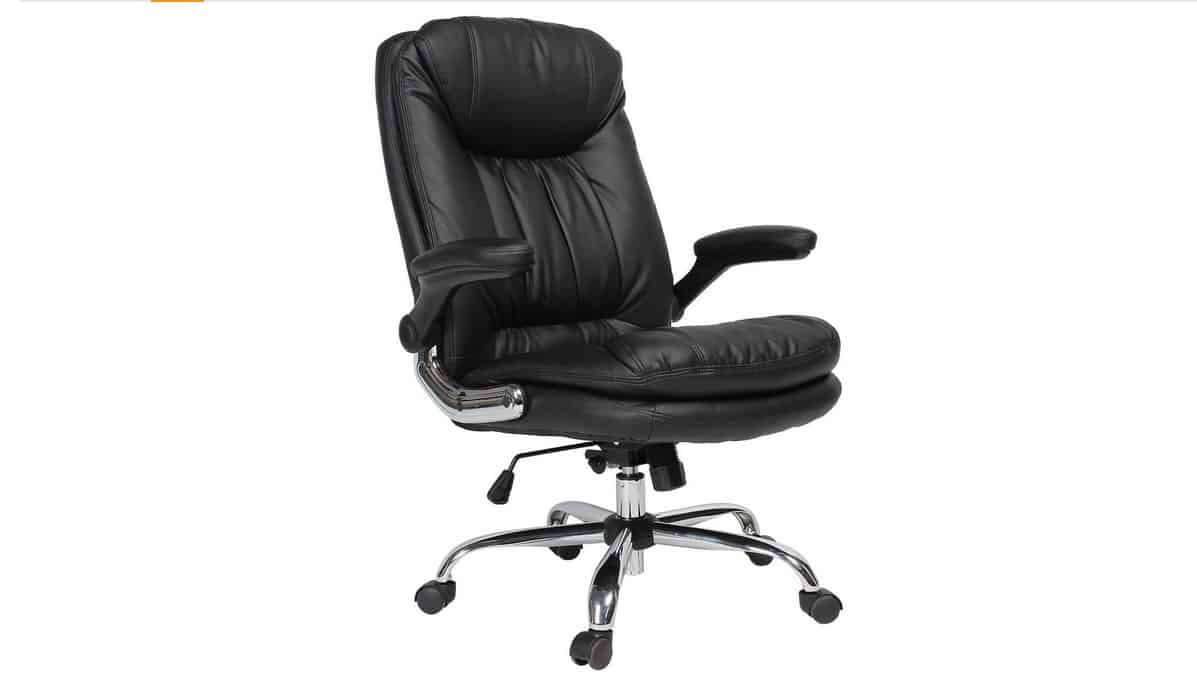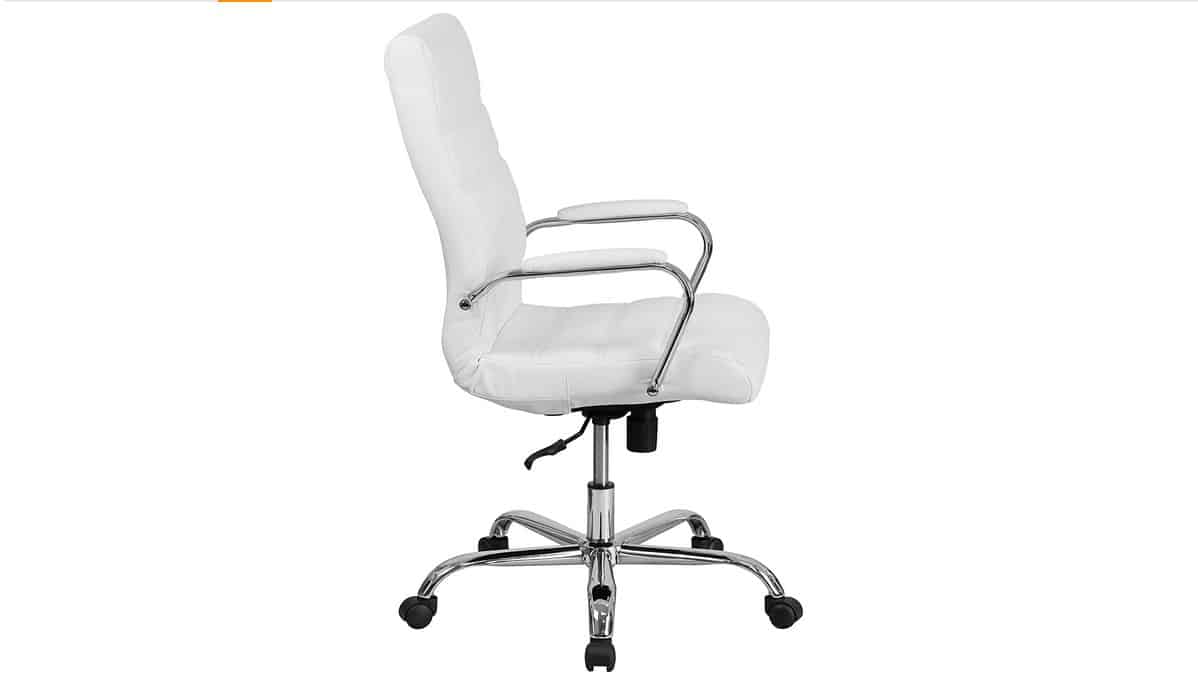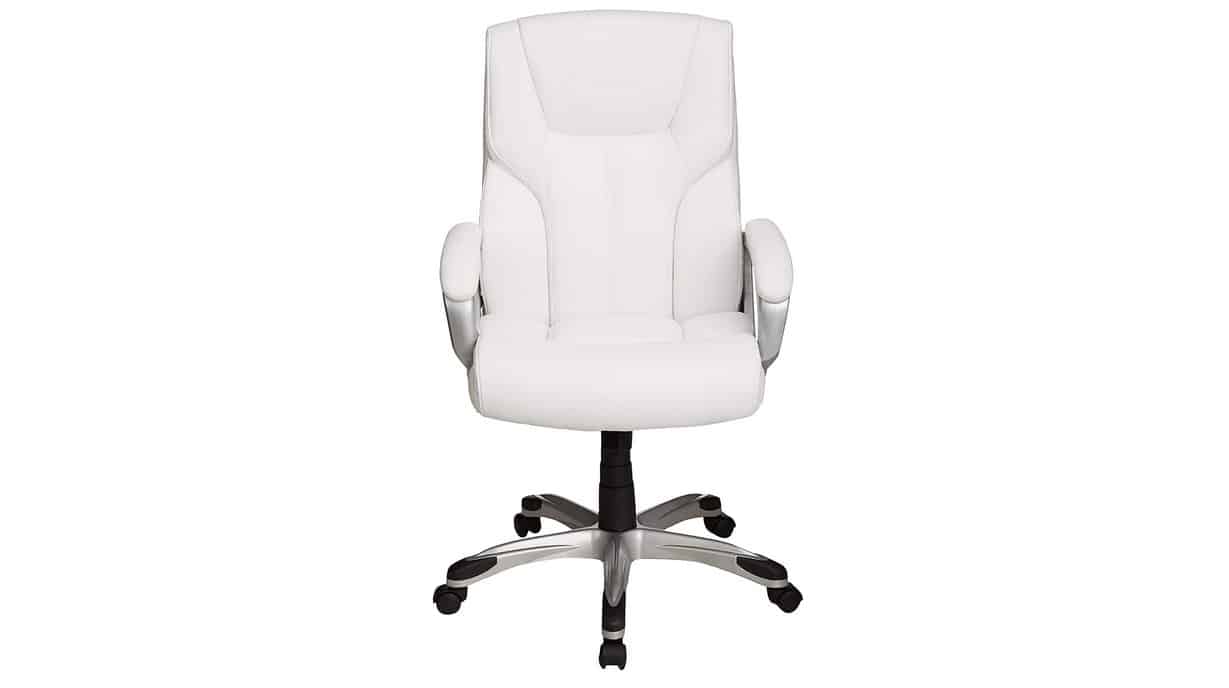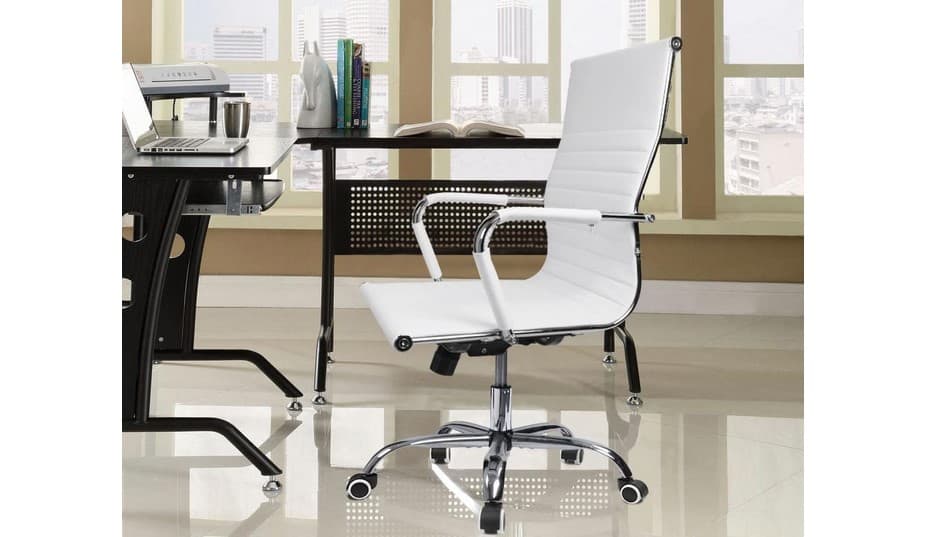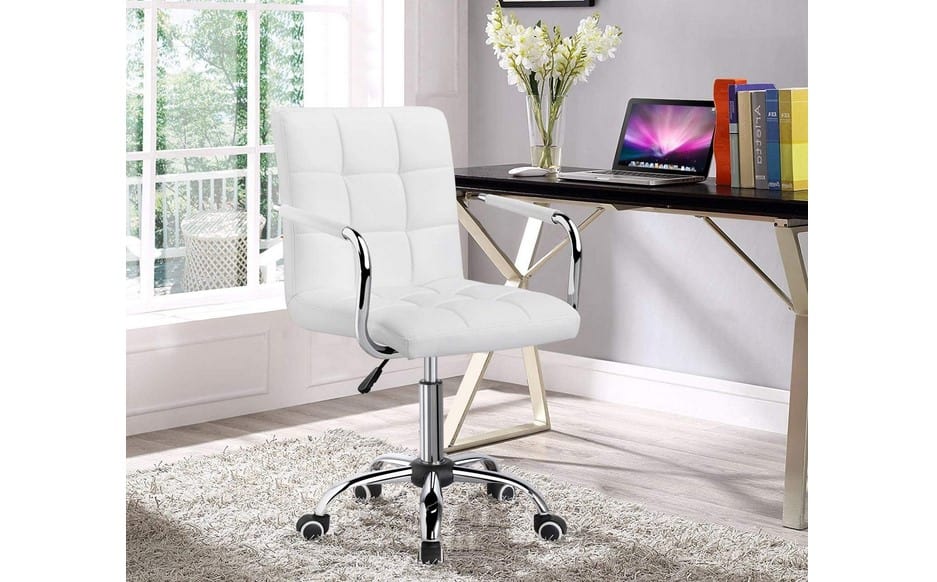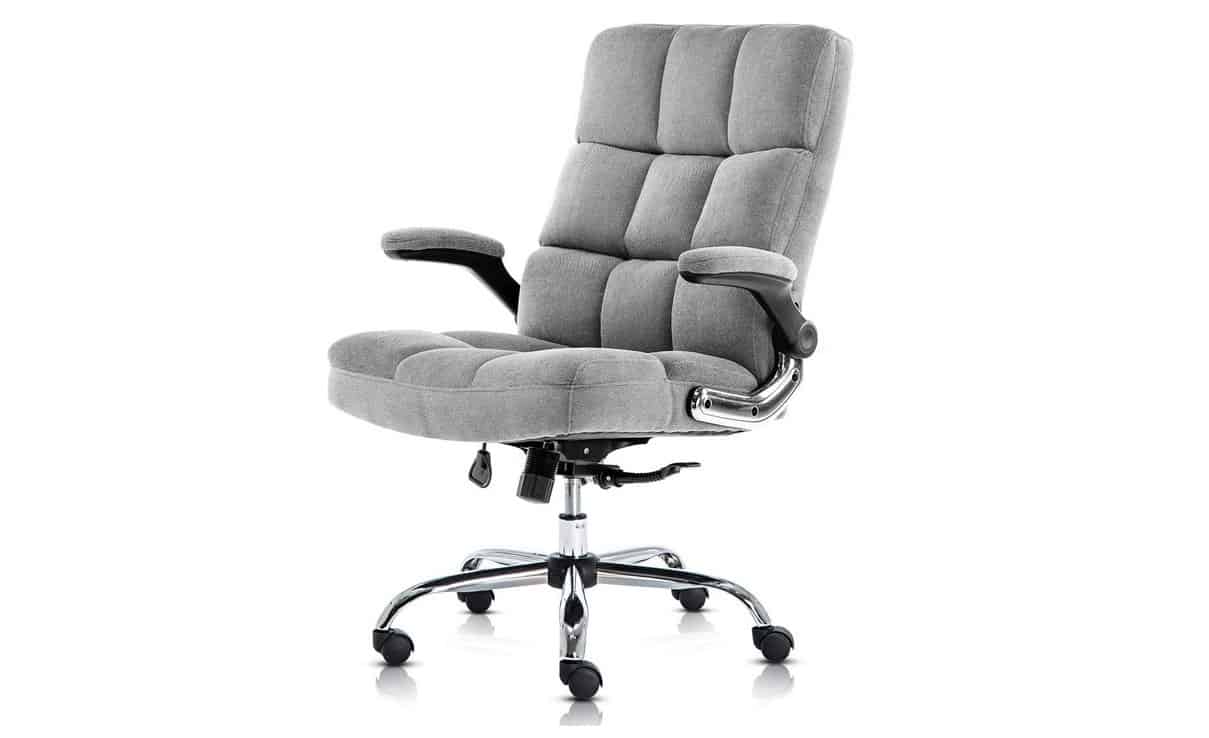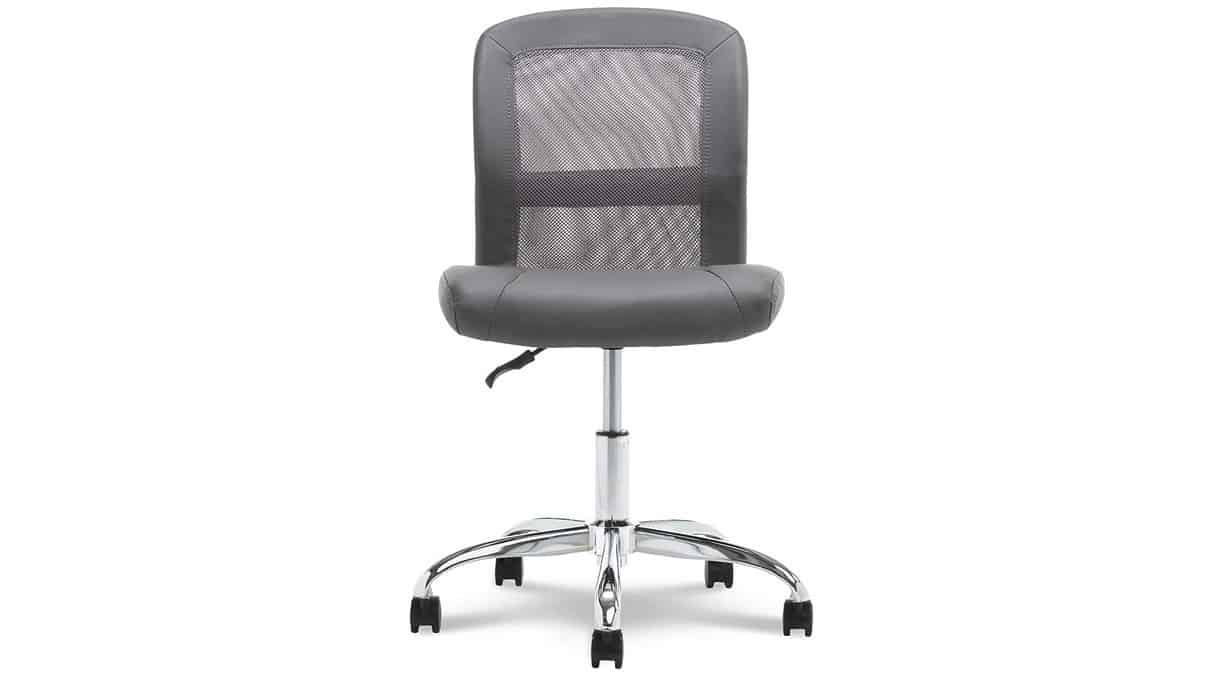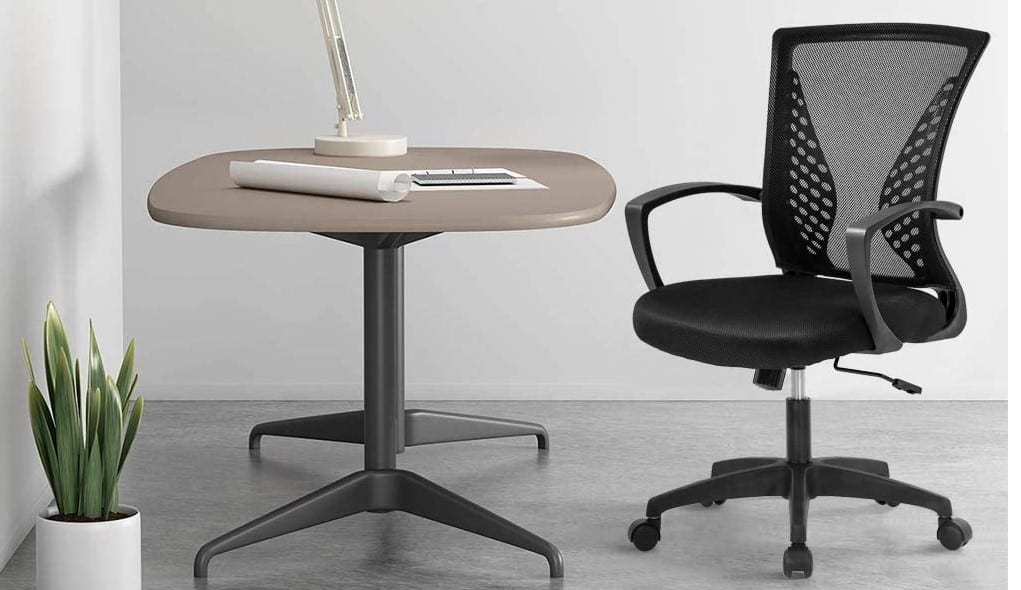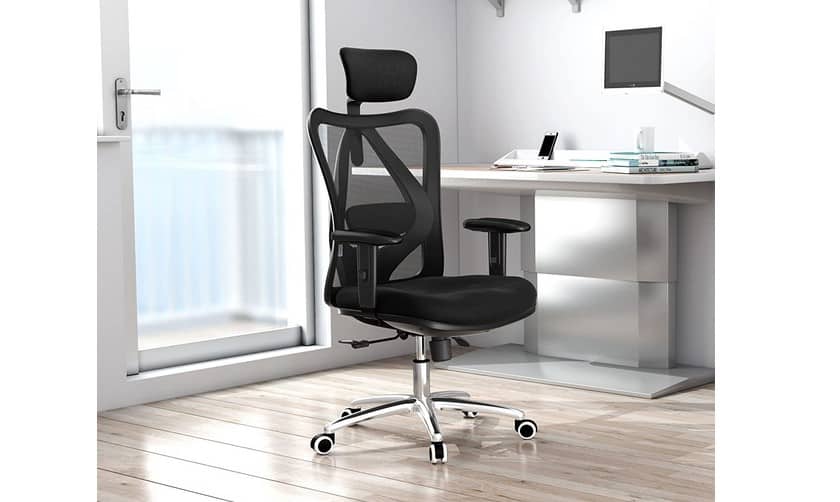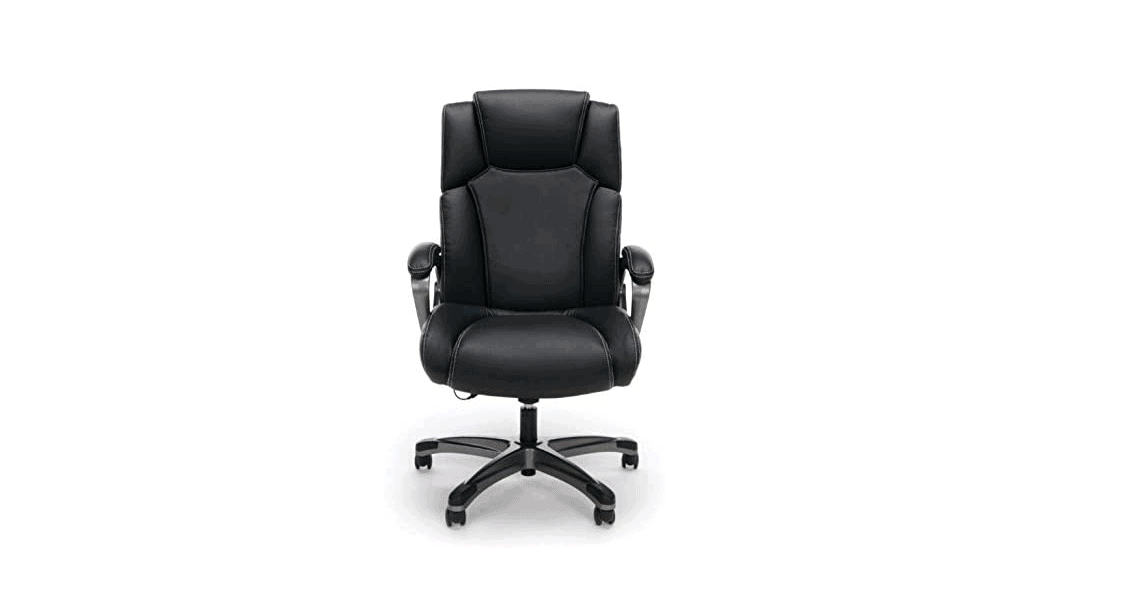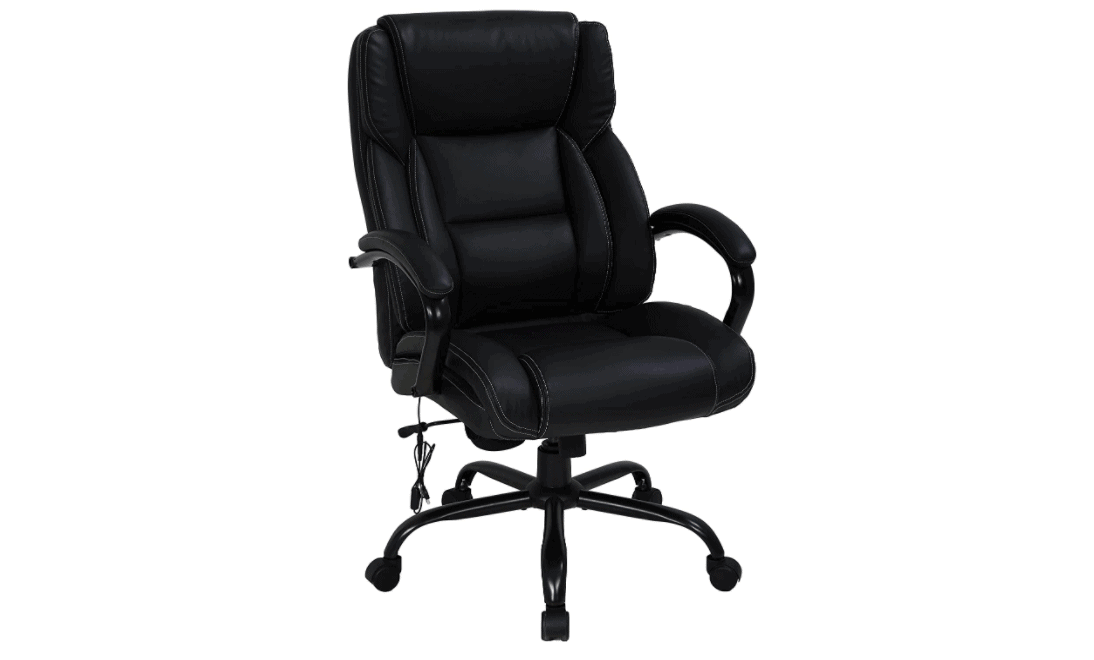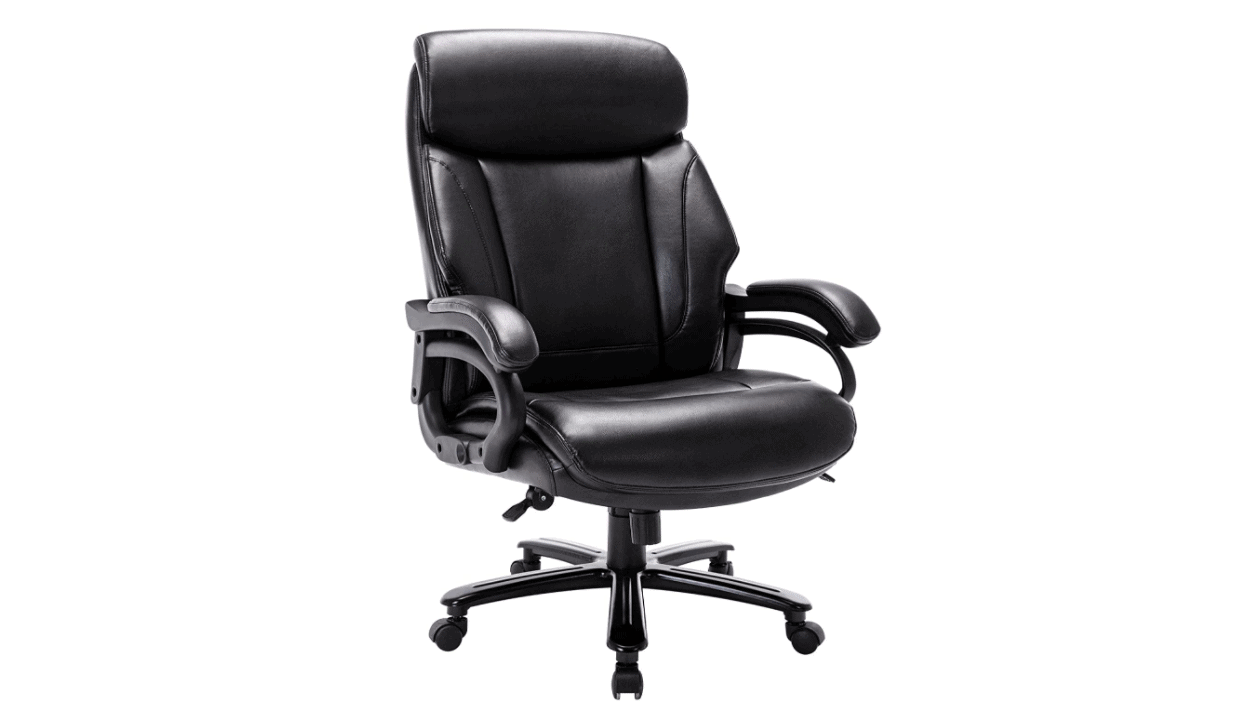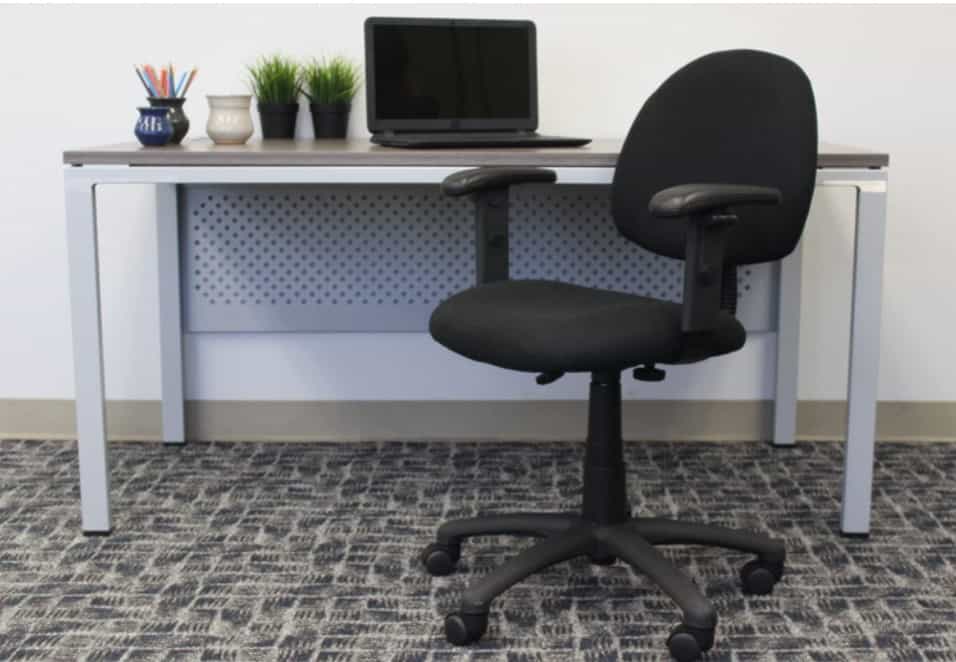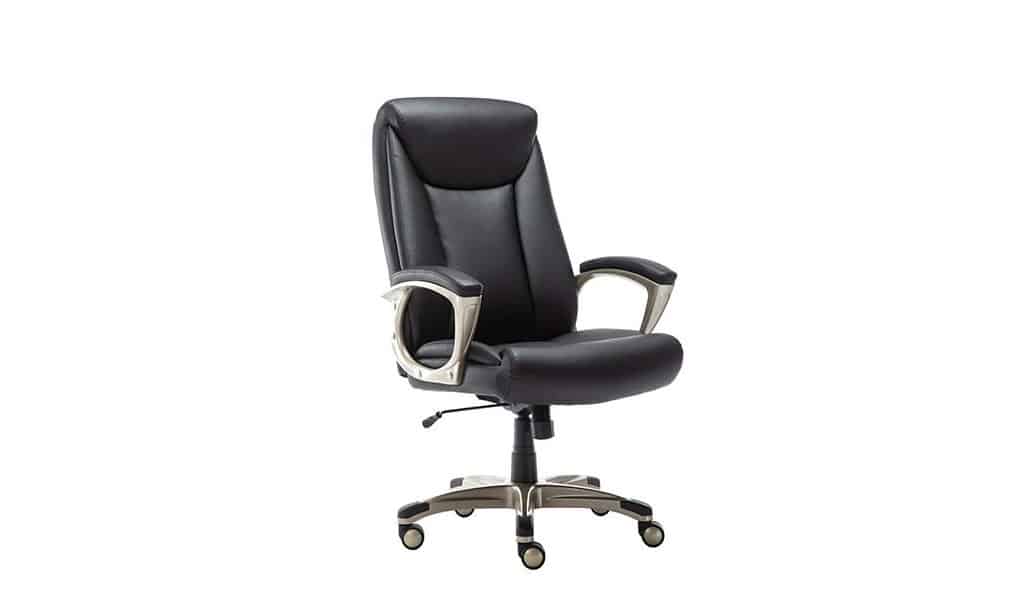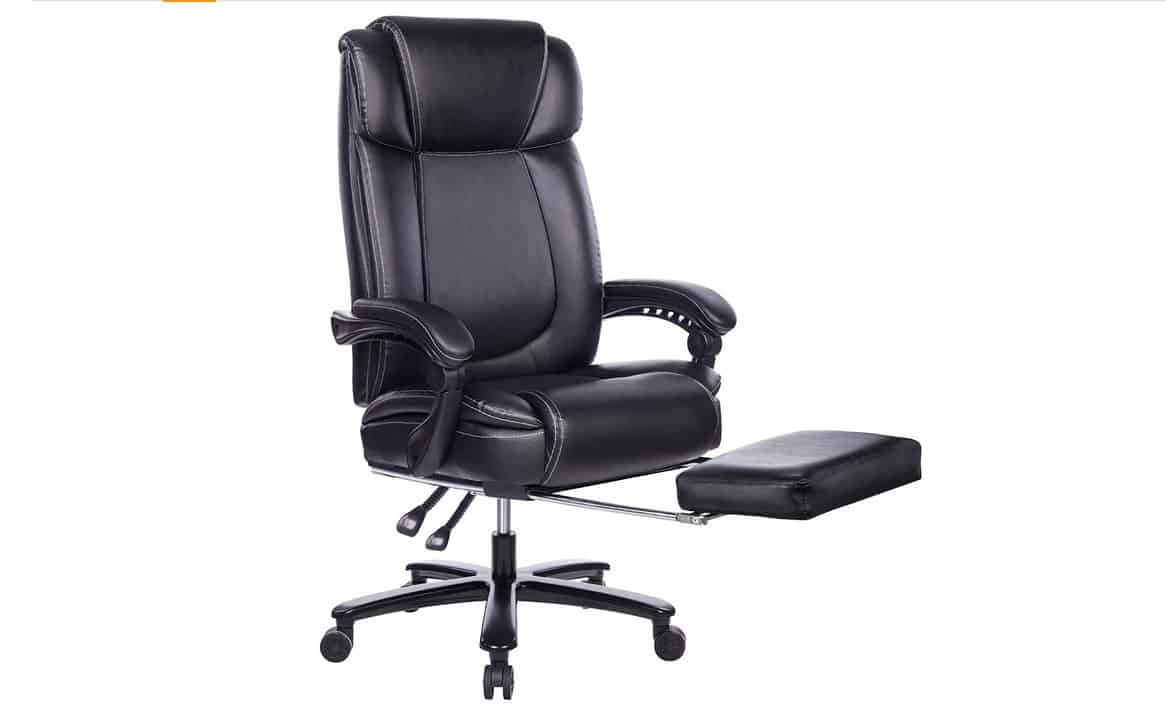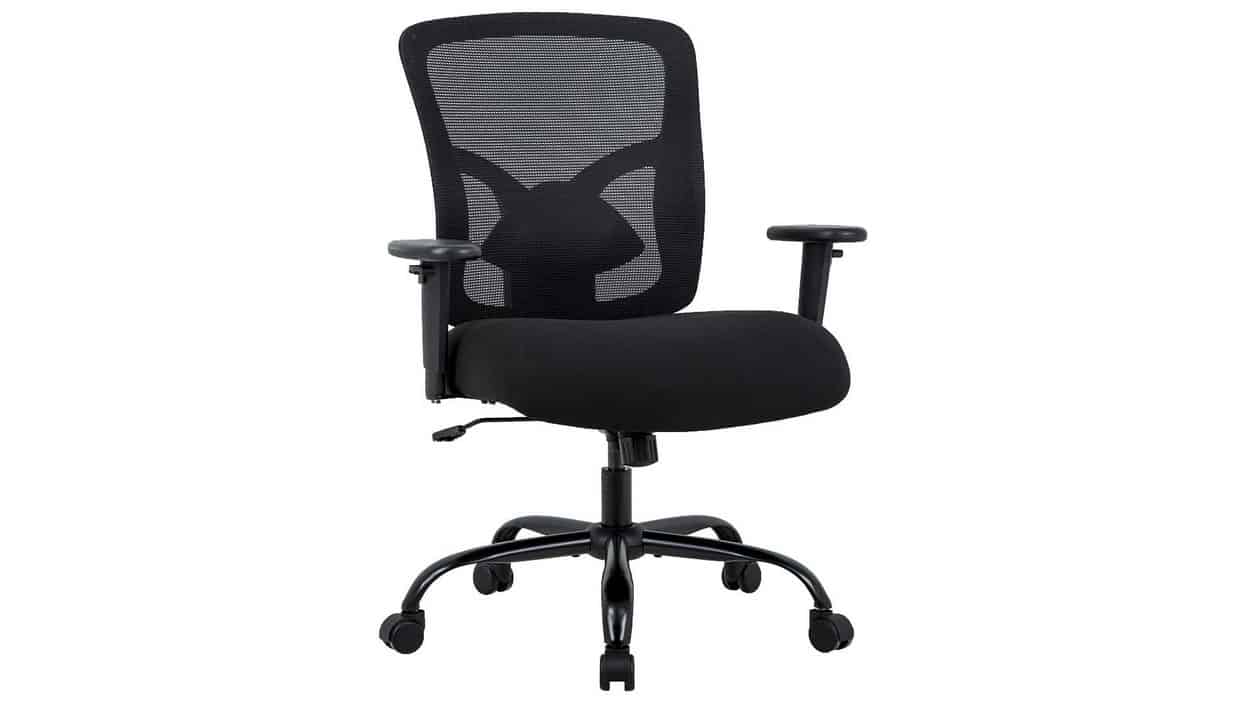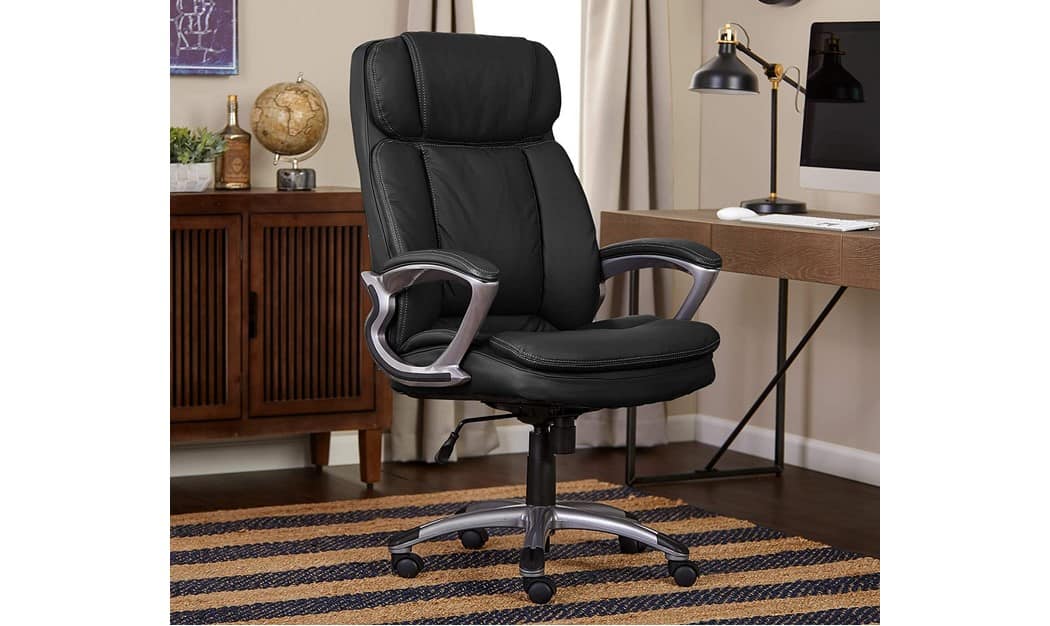Is your office chair getting old? It might be time to get the best office chair under $200. If you want to save your old chair, read on.
Because sometimes the best desk chair is one that you salvaged for a longer life. If you simply need a larger chair for your space, instead of upholstering take a look at the Hon Wave Big Tall Executive Chair instead of reupholstering yourself. If you’re also interested in new machinery for your office you should also read about how Epson’s new PaperLab recycles paper right in your office.
Do you have an old office chair with worn out upholstery and a look that just doesn’t match anything else you own? Maybe it’s time to reupholster that office chair and give it a new life at your desk or in another part of the home! As long as you have the right fabric and a little bit of time, this DIY reupholster project can add years on your office chair – and actually make it look like it belongs! Our guide can help you out. If you’d rather just buy a new chair, take a look at our Knoll ReGeneration ergonomic chair review to start.
Note: This project is designed to work with office chairs that have upholstery. In other words, you can’t really do this to chairs that are made of lightweight fabric weaves, because that’s all there is. Likewise, some pleather or vinyl coverings may not be designed for reupholstering, since their surfaces and padding may be created as a single unit – trying to reupholster a leather office chair is a problem for the same reason.
The project works best when you use it on traditional offices that have separate foam padding that can be uncovered and recovered with new fabric. You’ll find out very quickly if your chair qualifies or not. If you have really taken this project to heart, we suggest heading to a garage sale or giveaway and choosing a chair that’s several years old, with either cotton or jute (cotton is smoother, jute is rougher) that can be easily removed. Synthetic cloth like microfiber and nylon can often be removed as well. Look for the telltale folds of fabric down under the corners of the seat that show the upholstery was tucked under and can be lifted away.
Step 1: Gather the Necessary Tools and Materials
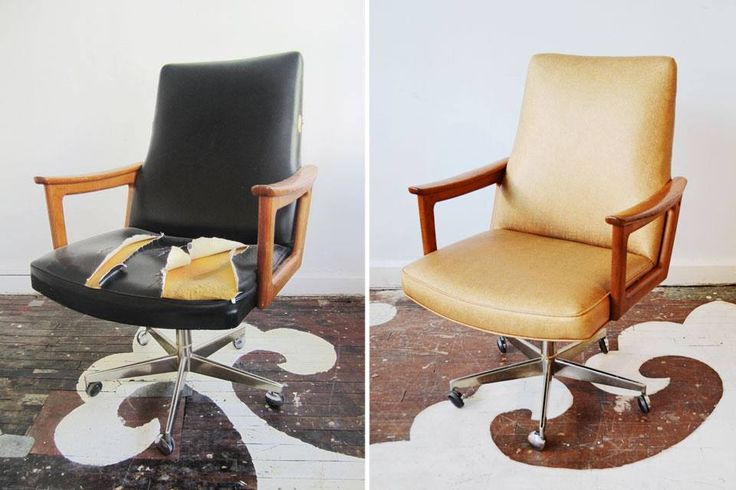
The cost to reupholster an office chair can vary, but if you already have the tools you should only need to pay for the fabric costs!
- The new fabric: Simple, cotton-based fabrics work best for these upholstering projects. If you choose outdoor fabrics they will come with extra protection, but they will also be more difficult to work with. It’s harder to say how much you need: A half yard or so is usually sufficient, but don’t be afraid to get more in case you make a mistake or need more fabric than you thought. “Fat” quarters work best when covering office chair seats, so go bigger if possible. Keep in mind where the chair is going to be: colors that resist sun damage, have flame retardant properties, or don’t stain easily may be important!
- A screwdriver set: If you have an electric drill or similar device that you can use as a screwdriver, this will work even better for a DIY reupholstering office chair project. But the screwdriver head must match the bolts or screws that you see on the underside of your office chair. You may need to switch out to wrenches, pliers or sockets if necessary – but we’ve found that a good screwdriver set and a wrench work most of the time.
- Pliers: Needle-nose is probably best here, you’ll be surprised how much you will use them.
- Scissors and a boxcutter: Both come in handy when cutting your fabric.
- A professional staple gun: You need some heavy-duty staples for this project, so don’t skimp out and try to use the office stapler to reupholster an office chair.
- Space: You need some space to work with here, so clear off the floor and get ready to work. A protective sheet is a good addition as well.
- A protective, light foam layer: If your chair is a little hard and you want to add some more padding, consider buying a padding layer along with new fabric. You don’t need much – we’re talking about lightweight foam, maybe a centimeter thick at the most, to provide some extra support and comfort.
Step 2: Take Your Chair Apart
First, does your chair have armrests? If it does, unlatch or unscrew them first and get them out of the way. If you’re wondering how to reupholster an office chair with arms, you can usually find a way, but you’ll have to take them off first.
Next, flip your chair upside down and look for the bolts or screws that secure the base to the “seat” of the chair. You will need to detach the base fully to work on upholstering the chair. It’s best to this by unscrewing all attachments at once and lifting the base fully off the seat cushion.
There are many different chair designs, and for some you will have to detach the back of the chair at the same time as the base.
After this step is done, you should have the back and seat of the chair, typically covered by a plastic base or framework of some kind. You will need to remove this next, so look for deep-set screws and get ready to work, because these screws are typically driven deep into wood framework within the chair (we told you electric tools may come in handy). Keep careful track of all screws and go very slowly when necessary so that you don’t strip any bolts or damage any of your framework materials.
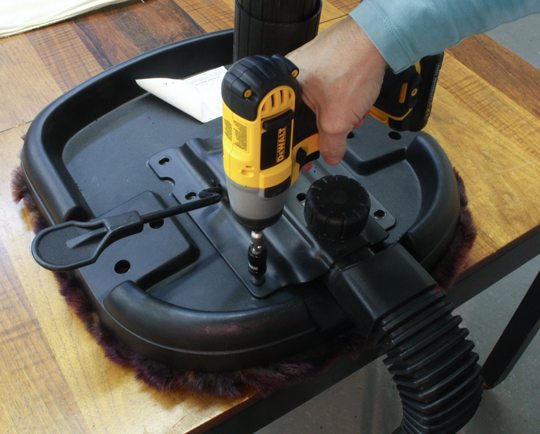
Unscrew the shell-like base from the bottom of the seat and, if necessary, the back of the chair. If everything has gone correctly, then this should expose the (usually) wooden surface that’s used as a brace for the chair padding and fabric. There is typically a wood base for the seat and for the back, which should be separated at this point. The upholstery should be stapled with a vigorous circle of staples or fasteners at the edge of this base.
Note: Some office chairs have fabric “buttons” inset. You can usually remove these buttons and even cover them with spare fabric pieces so that everything matches. However, be careful – chairs that include fabric buttons aren’t always easy to reupholster, since their original layer of fabric may not come off easily.
Step 3: Remove the Staples and Strip Away the Old Upholstery
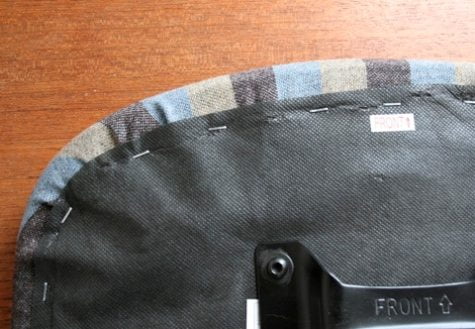
You see those staples? It’s time to get rid of them. Bring out the needle-nose pliers and start pulling the staples out. Depending on how the chair was manufactured, these staples could range from many small staples to several large metal fasteners. Either way, pry them out carefully and try to avoid damaging the wood beneath. For smaller staples the pliers are an ideal tool, but you may find a heavy-duty staple remover better for larger fasteners.
Grab a bag or box to put the old staples in once you worm them out, and work your way from corner to corner of the seat.
At each corner you will see that the fabric is folded over itself to form a tight fit. Unfold the fabric carefully as you go and spread it out. When you are finished, you should be able to pull the old upholstery off the seat. You should see that a simple foam layer or protective covering is all that’s left. When you are finished, do the same to the back of the chair if necessary.
Alternative Step: Skip Right to Installing New Upholstery
If your new fabric is thin enough and the construction of the seat and back simple enough, you may not have to remove the old upholstery – you can just install your new upholstery right on top of it. This may even work with vinyl chairs where you cannot remove the old upholstery, allowing you to completely change the look and feel of the chair.
There are a lot of caveats to this choice: the old fabric may not have the right texture, and you may not be able to get the new upholstery firm enough to avoid scratching and wrinkles. But if it’s viable, this step can save a lot of time and you will end up with a chair that has a little more protection. It works best with chairs that do not have a lot of contours and “ergonomic” shapes, which cannot easily be covered by fabric. The goal here is to create a DIY office chair cover with no sewing required, but sowing is an option if you’re desperate.
Step 4: Place and Cut The New Upholstery Fabric
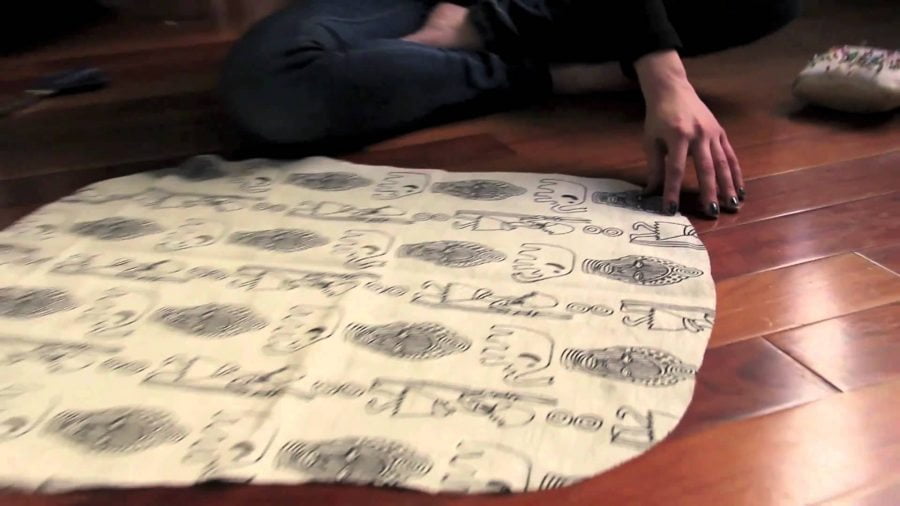
Take your fabric and position it underneath the seat, with the wood backing facing upward. If you have a foam layer to install, do this with the foam layer first! Fold the fabric around the seat for some measurements – it doesn’t have to be exact, but you should have enough fabric for four inches along the edges of the wood base. Once you have enough, cut your fabric.
Step 5: Attach the New Upholstery
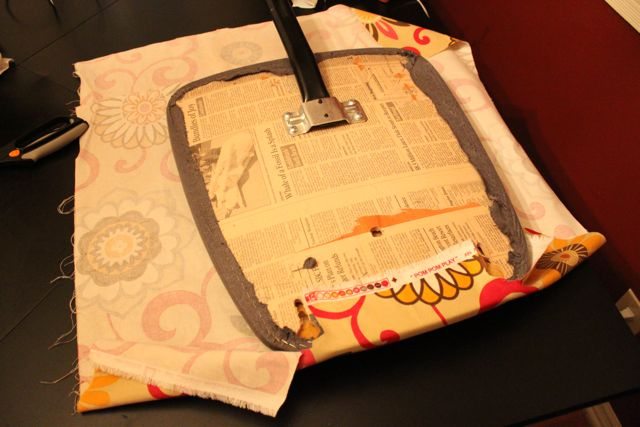
This is easily the most difficult step. Because of the awkward shape of most seats and office chair backs, the fabric will not fold neatly around the base. The most important tool that you have for this process is patience.
Fold the fabric layer up and around the back of the seat. Slowly attach it, alternating sides to keep the fabric as smooth and flat as possible. Leave the corners for last. If you have a glue gun or similar adhesive option, you may want to attach the fabric with a little glue first before stapling it down.
When you reach the corners, try to imitate the folds that you undid in the old upholstery. Use “triangle” folds that wrap the fabric tightly around the corner, a little like wrapping a Christmas present. It’s a good idea to leave a little bit of give – if you pull the fabric too tight, it can create wrinkles and other problems up front. If you used glue, now is the time to leave the project for a while and wait for it dry.
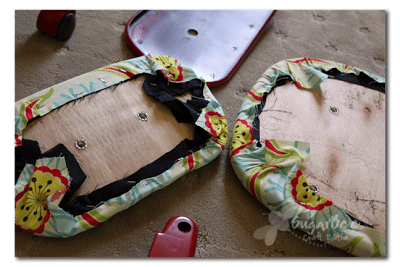
Once you have worked the fabric into a smooth fit, use your staple gun and fasten the fabric down with a line of staples at least every inch or so. There are other options, such as fabric tacks, but heavy-duty staples tend to work best here. If there’s a lot of leftover folds of fabric dangling from the base, then cut it out with your scissors so the fit is smooth.
Step 6: Reattach the Backing to Your Chair
Now it’s time to return the back to your chair with those screws that you carefully preserved. For some office chairs, you may have the option to cover these backs (usually the non-plastic kind) in upholstery as well so that everything matches, but it isn’t always necessary. Again, it’s fine to tweak you plans to fit the unique design of your office chair, since they’re all a little different.
If you have to place screws directly through your new fabric covering, don’t worry about it – just poke a hole and keep going. Remember that the fit may be a little different with new upholstery, so go slowly and make adjustments as needed.
Step 7: Continue the Process as Needed with the Other Chair Components
Specifically, if your armrests also have fabric on them, you may want to replace this upholstery as well. Fortunately, it should be just like a smaller version of the project you just did. So start unscrewing the armrests from their base and carefully peel back their fabric: They may not fully detach the way that the seat did!
Detachable neck or headrests are more complicated, since they may come with fitted fabric sleeves that are harder to replicate. You can decide if you want to tackle this project to make sure everything matches or not.
This is also the place to consider if you want to change anything else, such as casters or the color of base, which you can update with a thorough (and careful) spray paint project. Take your time, and make sure everything is just the way you want it before you move on. Perfectionists tend to spend a lot of time on this step.
Step 8: Put the Office Chair Back Together Again
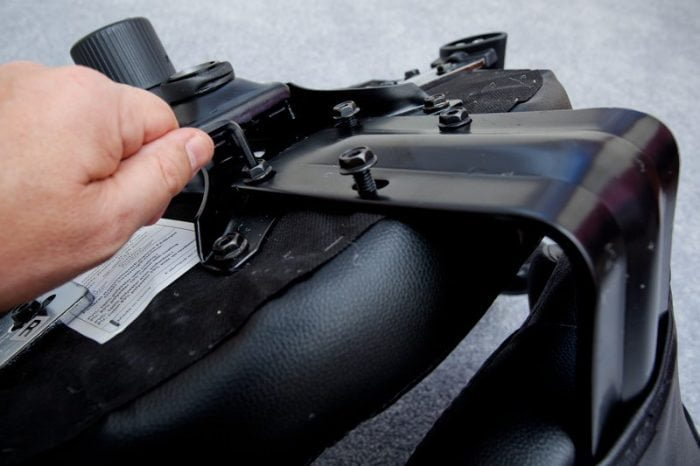
If the seat and back of the office chair are still in separate pieces, attach them again before moving on. Then attach the wheeled base of the chair (this doesn’t work as well if you switch up the order). Reverse the steps you used in the deconstruction and replace all bolts and screws as necessary. Test components to make sure they are safely connected, sturdy, and at the right angles.
As long as you go slowly and make sure you have all the necessary pieces together, this step should be pretty easy. Once you put back the best seat cushion and when the chair is returned to its old form, set it down and test it out! Check for any loose pieces or weird angles that may need further readjustment. If there are any annoying fabric wrinkles, see if you can tuck them back into the depths of the chair. In the future, it’s a good idea to avoid wearing pants with metal buttons or other objects that can rip your new fabric while using your office chair.
Related Articles:

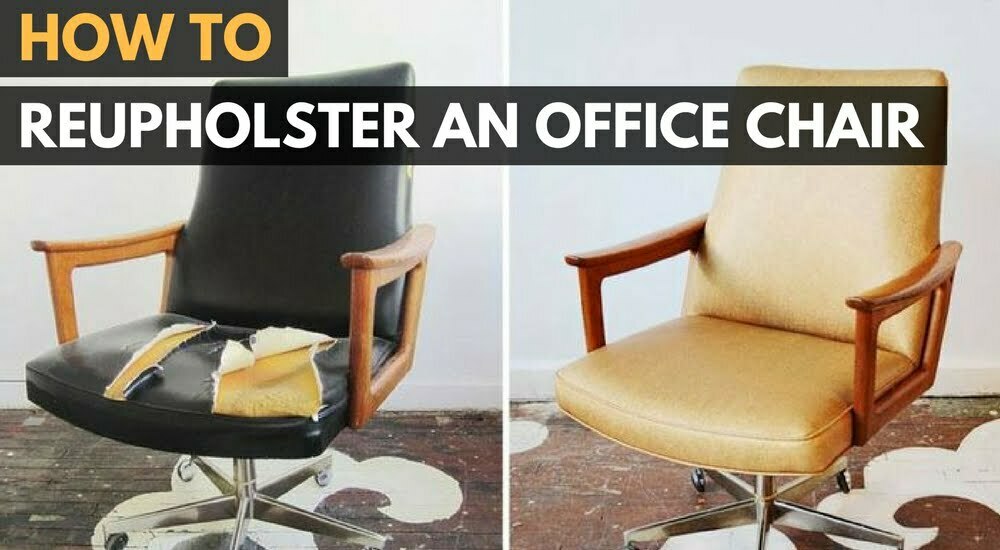













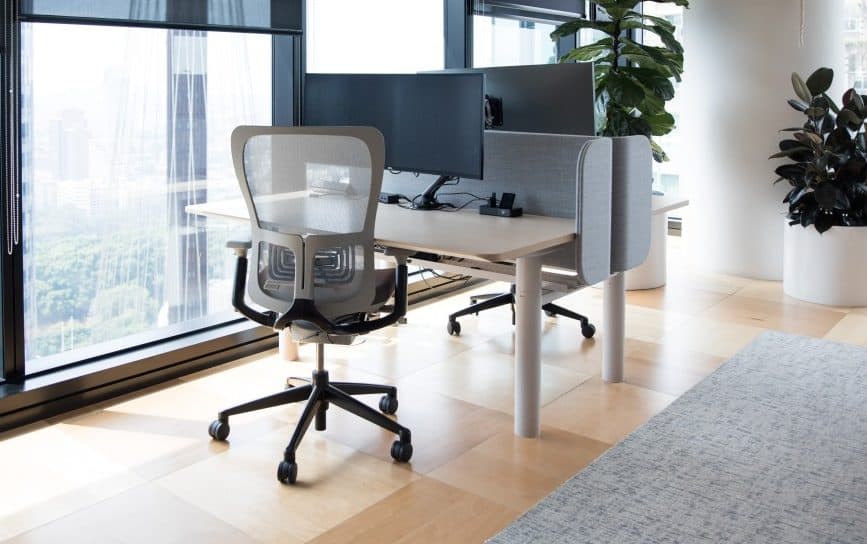
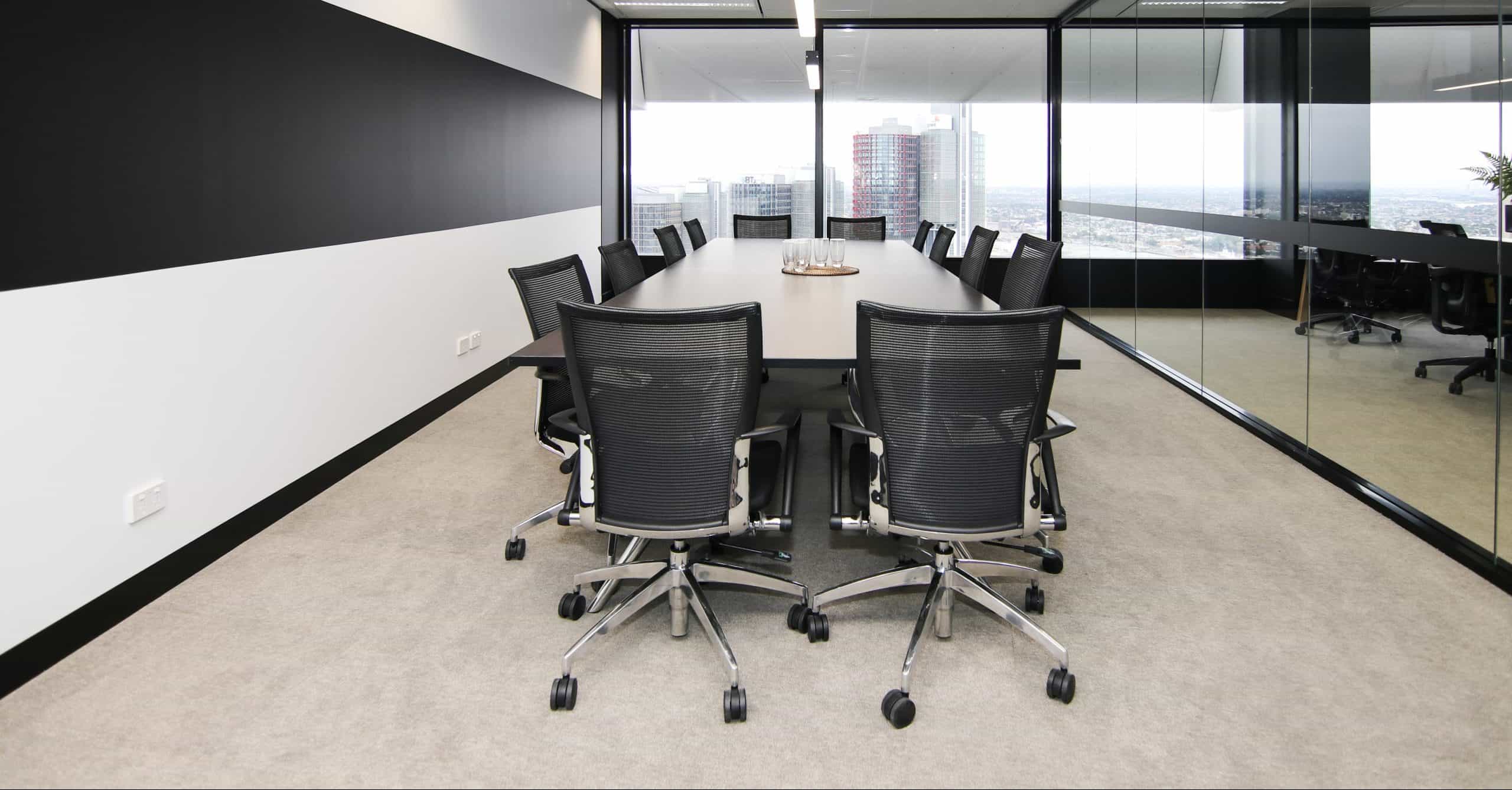
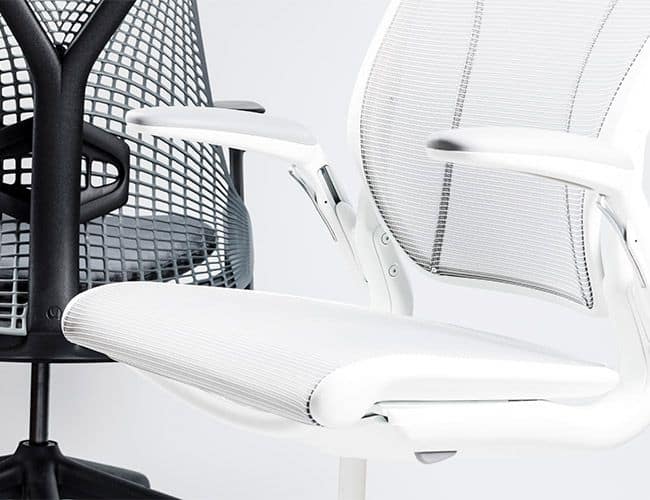
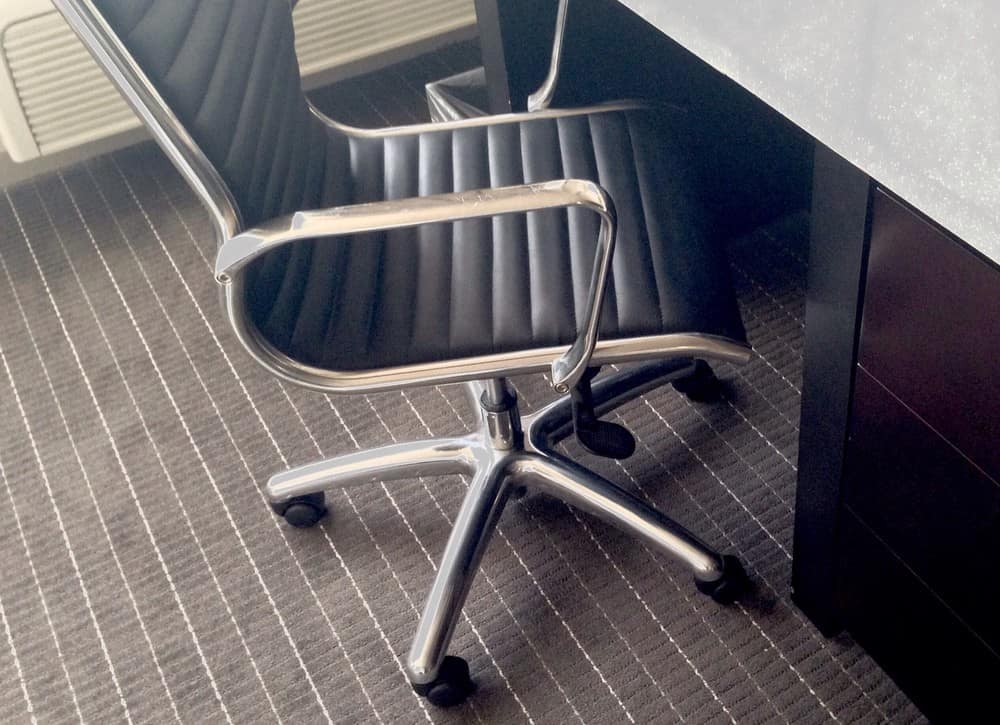
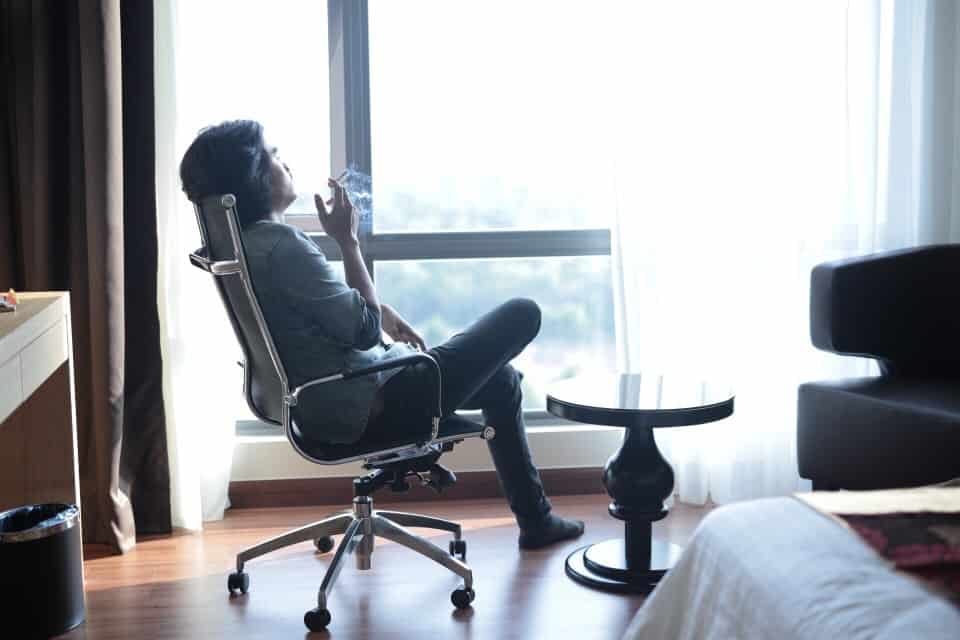
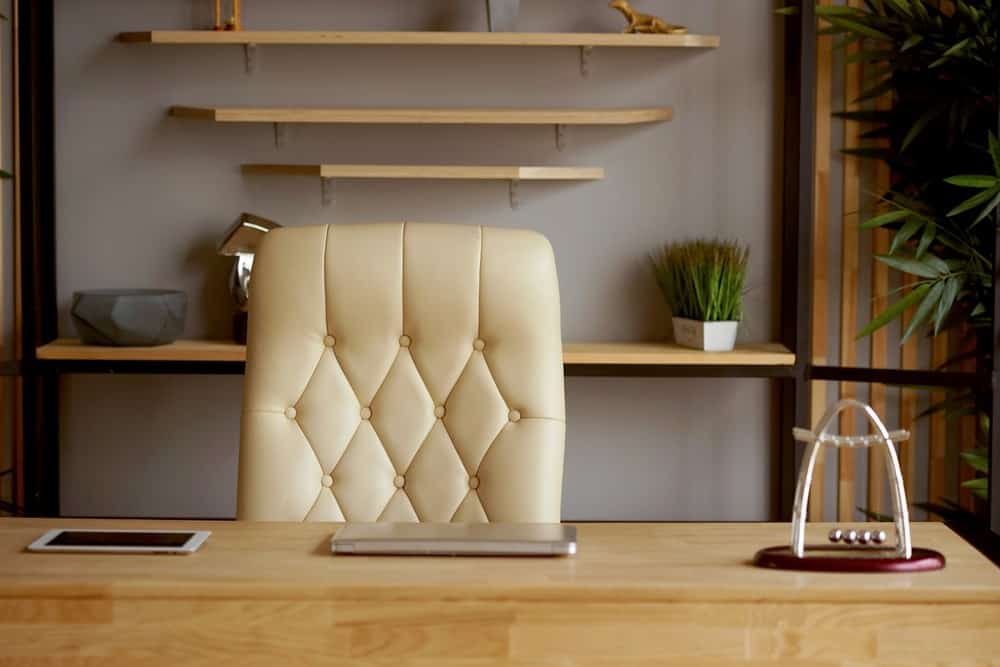
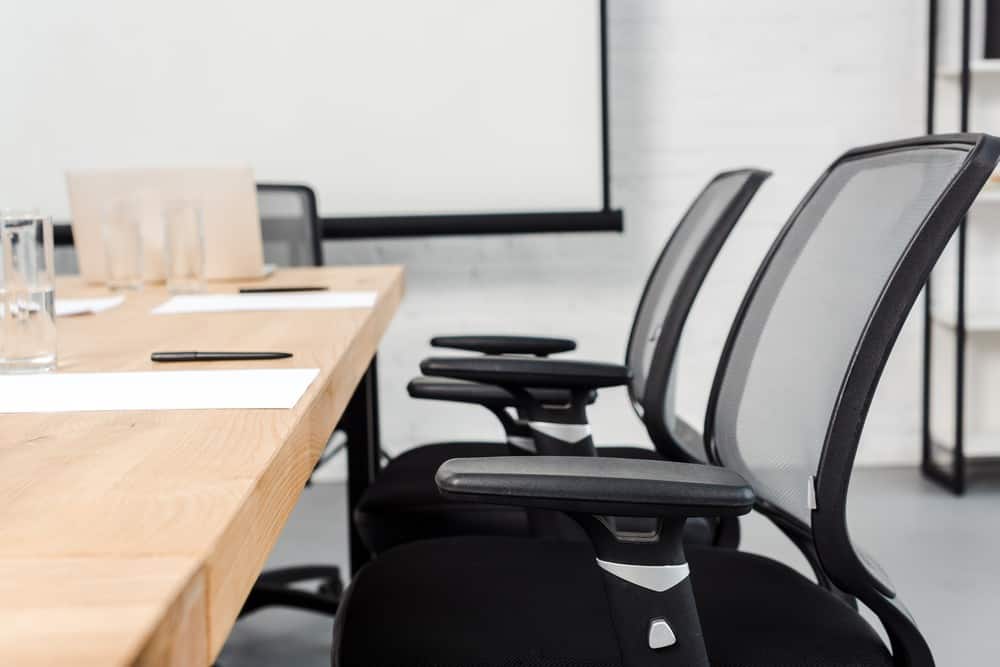


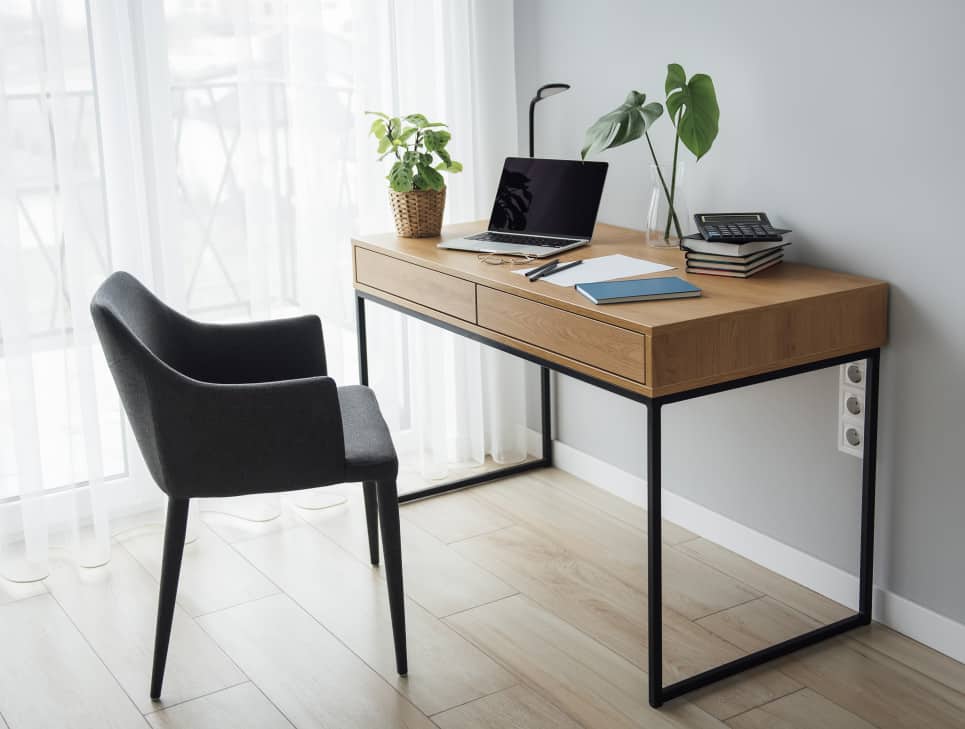
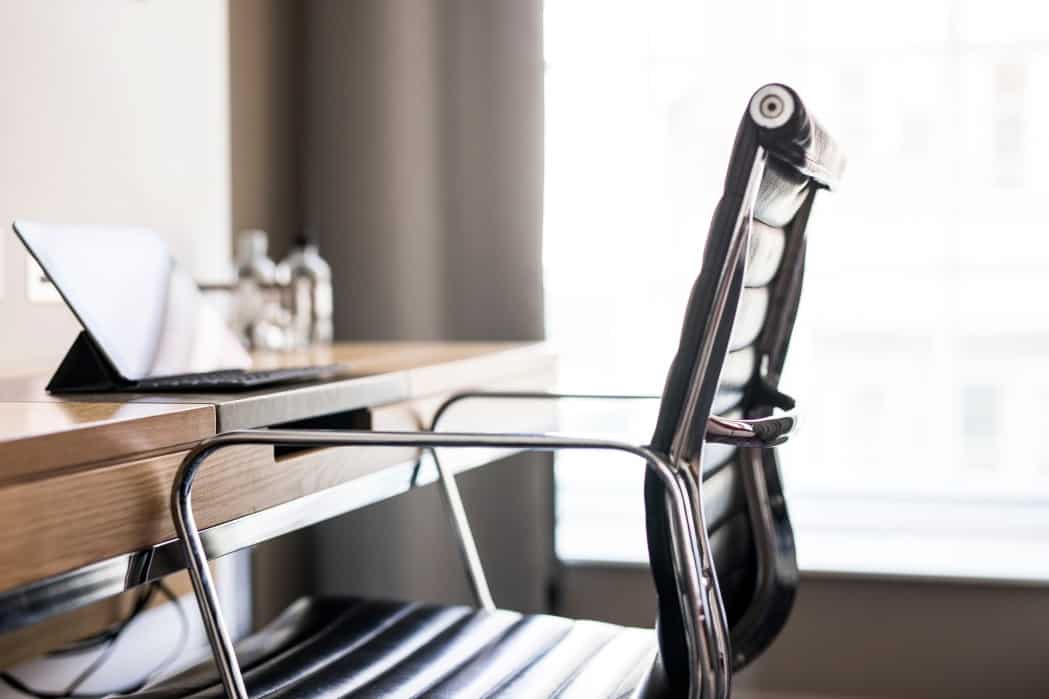

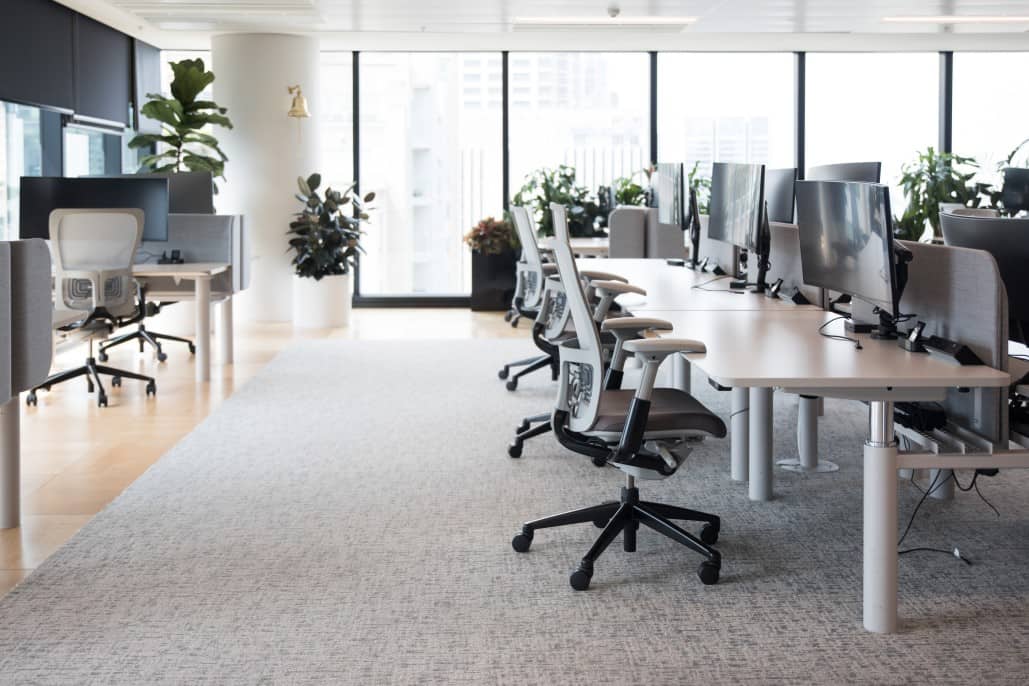
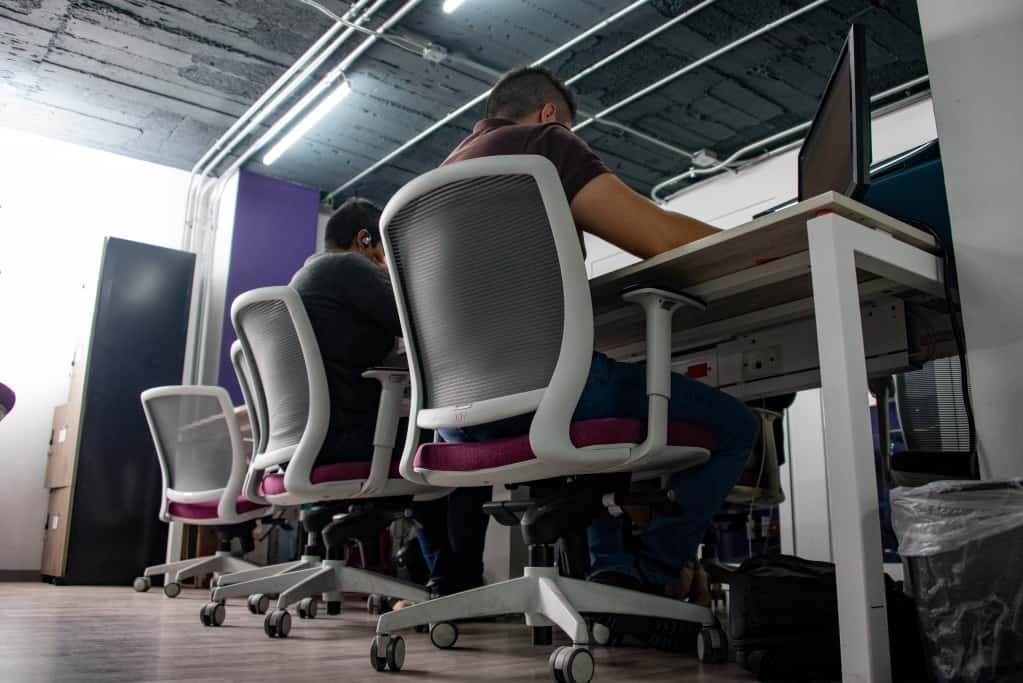
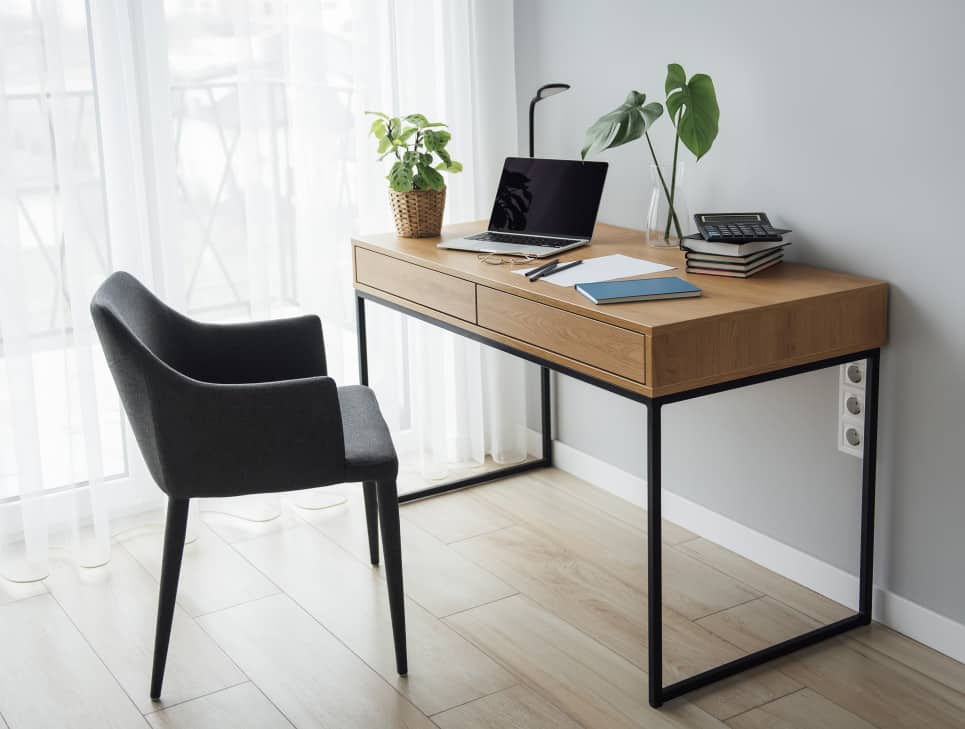
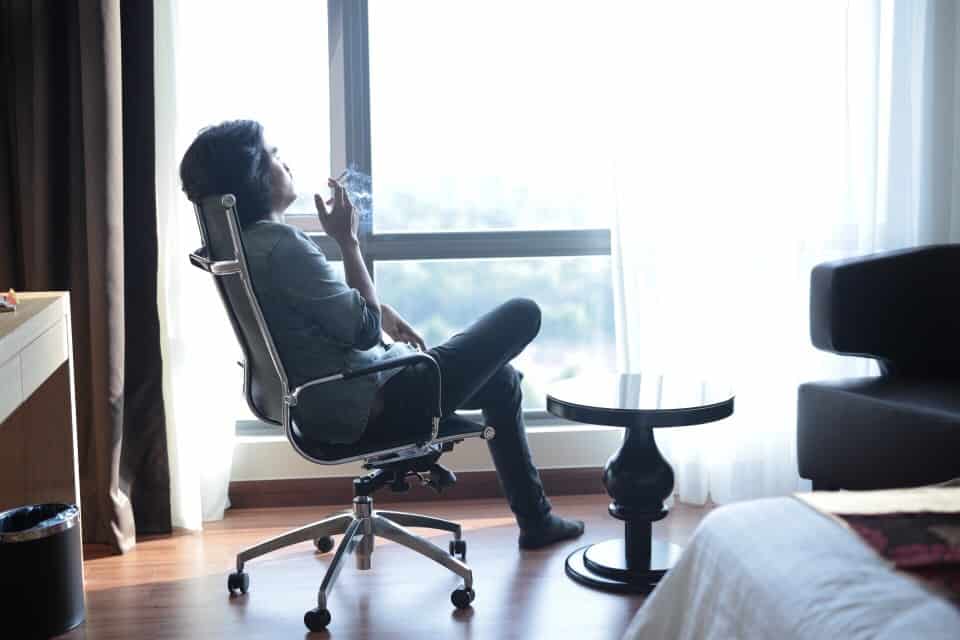
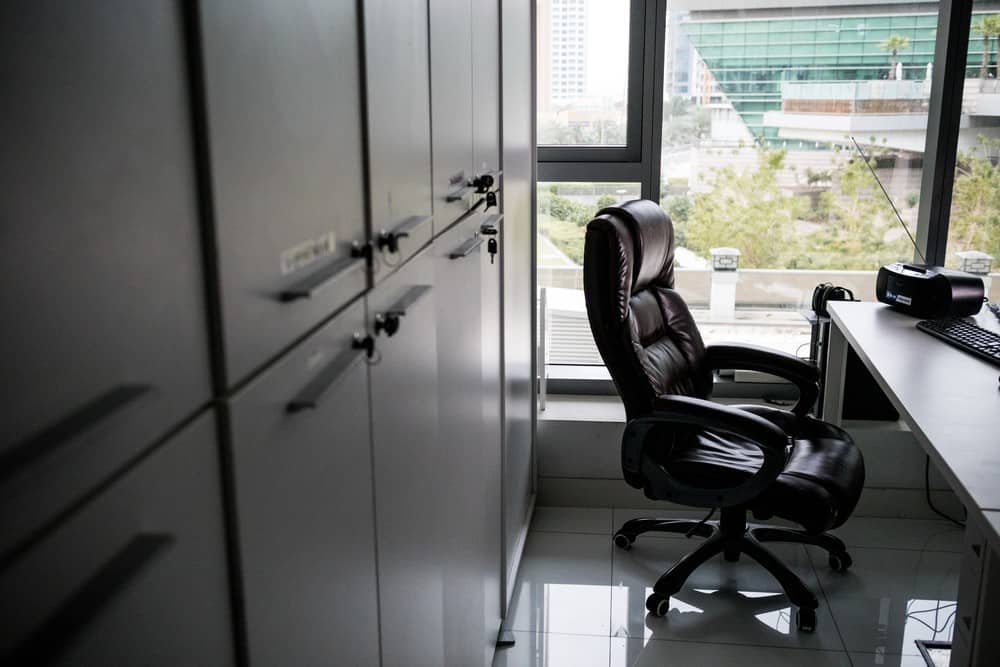
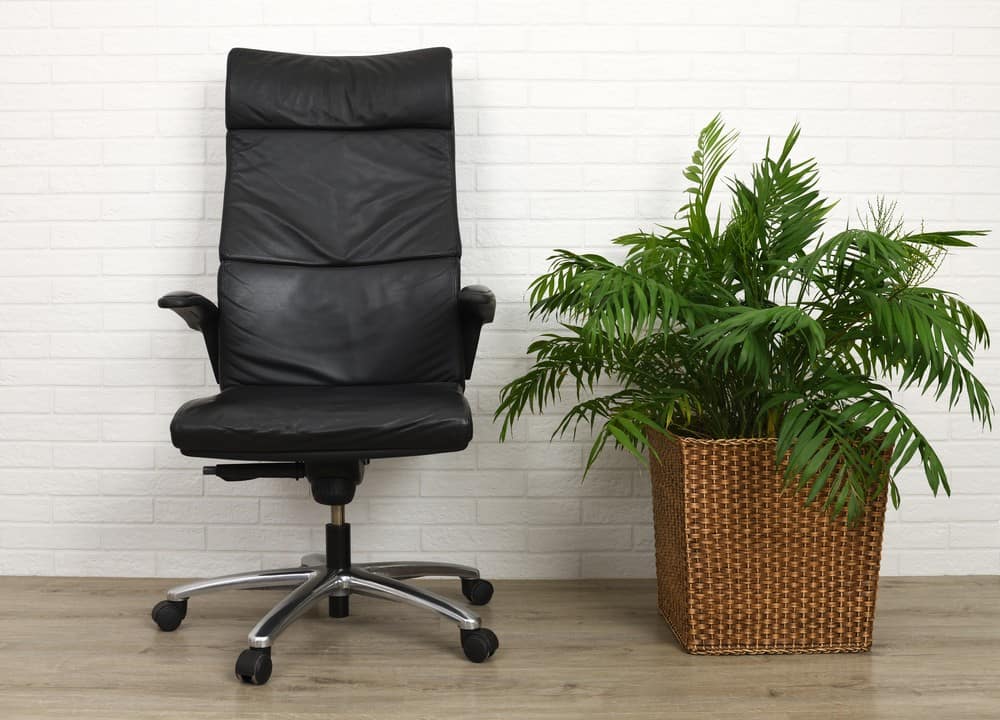

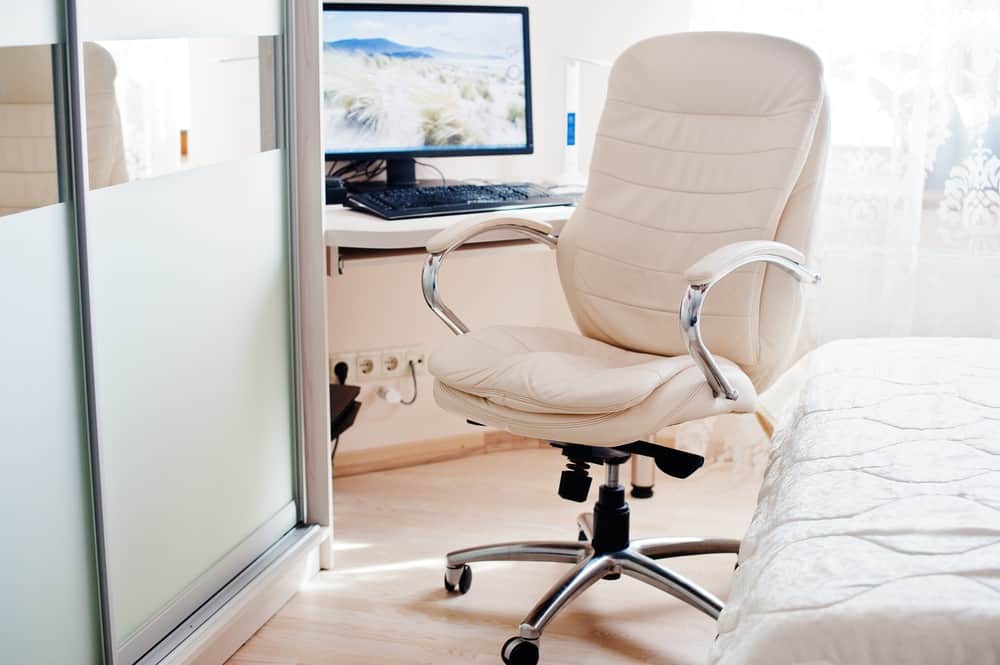
![Best Office Chair in [year] ([month] Reviews) 34 Best Office Chair in 2026 (January Reviews)](https://www.gadgetreview.dev/wp-content/uploads/best-office-chair-image.jpg)
![Best Office Chairs for Sciatica in [year] 35 Best Office Chairs for Sciatica in 2026](https://www.gadgetreview.dev/wp-content/uploads/best-office-chair-for-sciatica-image.jpg)
![Best Office Chairs for Hip Pain in [year] 36 Best Office Chairs for Hip Pain in 2026](https://www.gadgetreview.dev/wp-content/uploads/best-office-chair-for-hip-pain-image.jpg)
![Best Chairs for Programmers in [year] 37 Best Chairs for Programmers in 2026](https://www.gadgetreview.dev/wp-content/uploads/best-chair-for-programmers-image.jpg)
![Best Haworth Office Chairs in [year] 38 Best Haworth Office Chairs in 2026](https://www.gadgetreview.dev/wp-content/uploads/best-haworth-office-chairs-image.jpg)
![Best Wooden Office Chairs in [year] 39 Best Wooden Office Chairs in 2026](https://www.gadgetreview.dev/wp-content/uploads/best-wooden-office-chairs-image.jpg)
![Best Humanscale Office Chairs in [year] 40 Best Humanscale Office Chairs in 2026](https://www.gadgetreview.dev/wp-content/uploads/best-humanscale-office-chairs-image.jpg)
![Best Herman Miller Office Chairs in [year] 41 Best Herman Miller Office Chairs in 2026](https://www.gadgetreview.dev/wp-content/uploads/best-herman-miller-office-chairs-image.jpg)
![Best Steelcase Office Chairs in [year] 42 Best Steelcase Office Chairs in 2026](https://www.gadgetreview.dev/wp-content/uploads/best-steelcase-office-chairs-image.jpg)
![Best Leather Office Chairs in [year] 43 Best Leather Office Chairs in 2026](https://www.gadgetreview.dev/wp-content/uploads/best-leather-office-chairs-image.jpg)
![Best Fabric Office Chairs in [year] 44 Best Fabric Office Chairs in 2026](https://www.gadgetreview.dev/wp-content/uploads/best-fabric-office-chairs-image.jpg)
![Best Hon Office Chairs in [year] 45 Best Hon Office Chairs in 2026](https://www.gadgetreview.dev/wp-content/uploads/best-hon-office-chairs.jpg)

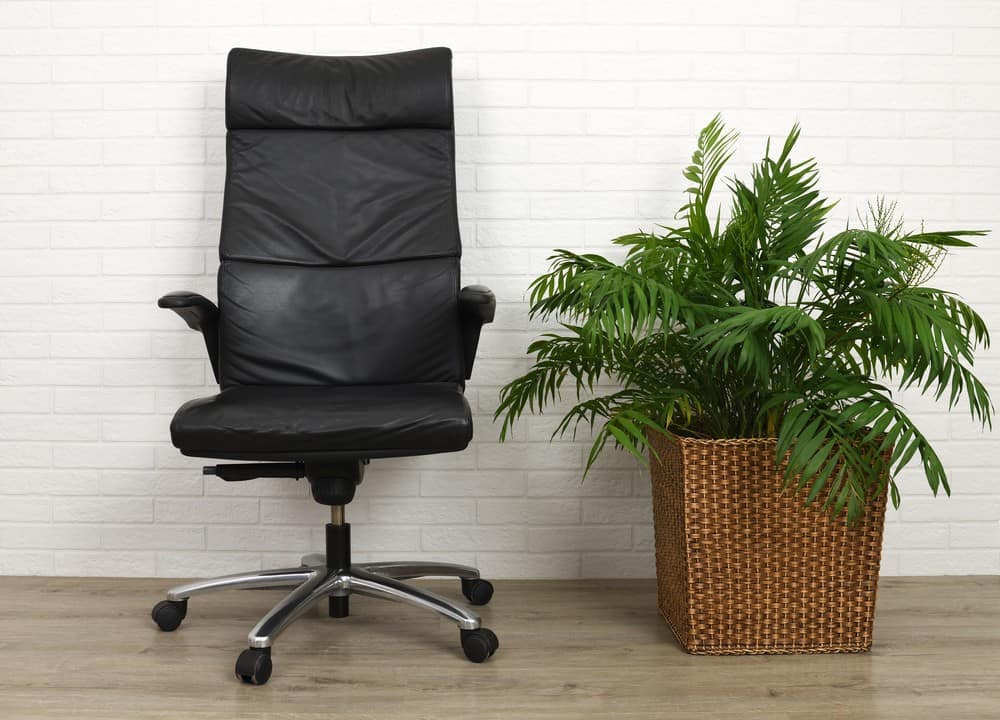
![10 Best Mesh Office Chairs in [year] 48 10 Best Mesh Office Chairs in 2026](https://www.gadgetreview.dev/wp-content/uploads/Best-Mesh-Office-Chair.jpg)
![10 Best High Back Office Chairs in [year] 49 10 Best High Back Office Chairs in 2026](https://www.gadgetreview.dev/wp-content/uploads/Best-High-Back-Office-Chair.jpg)
![10 Best White Office Chairs in [year] 50 10 Best White Office Chairs in 2026](https://www.gadgetreview.dev/wp-content/uploads/Best-White-Office-Chair.jpg)
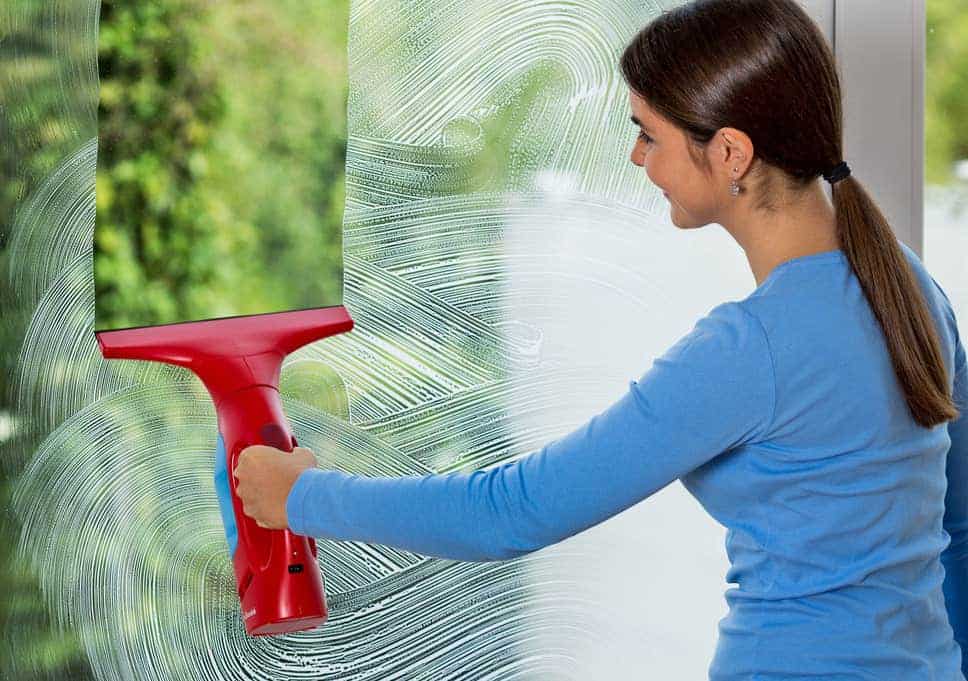
![Best Office Chair Under $300 in [year] ([month] Reviews) 52 Best Office Chair Under $300 in 2026 (January Reviews)](https://www.gadgetreview.dev/wp-content/uploads/chair-lower-back-pain.jpg)
![10 Best Drafting Chairs in [year] 53 10 Best Drafting Chairs in 2026](https://www.gadgetreview.dev/wp-content/uploads/best-drafting-chair.jpg)
